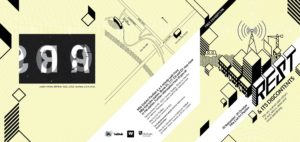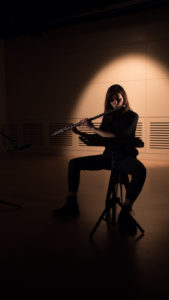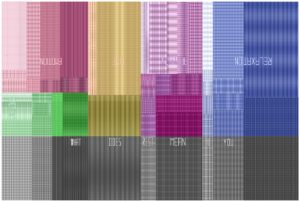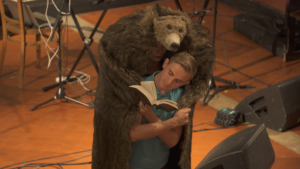
Rest & Its Discontents Exhibition
Curated by Robert Devcic, founder of GV Art London
Mile End Art Pavilion, 30 September until 30 October 2016
Reviewed by Natasha Feiner
Modern life is busy, exhausting, and stressful. Yet, rest remains as important as ever. But what does it mean to rest in the modern world? Does rest, or its absence, impact on individual health and wellbeing?

Mental Health Resistance Network, Reclaiming our lives and work struggles past, present and future
Rest & Its Discontents, a major new exhibition exploring the dynamics of rest, seeks to answer these questions. It draws on the research of Hubbub, an international collective of social scientists, artists, humanities researchers, scientists, broadcasters, public engagement professionals and mental health experts. Over the past two years the team, based at the Wellcome Collection in London, has explored the dynamics of rest, exhaustion, noise, tumult, and work, as they operate in mental health, neuroscience, the arts and the everyday. This exhibition is their final major event.
Rest & Its Discontents features the work of over twenty-five Hubbub contributors. Work from a number of different academic disciplines is presented in a multitude of formats including audio recordings, film, and interactive installations. A number of topics are explored in the exhibition, including therapeutic relaxation, breath and musical ‘rest’, and sleep studies.

Antonia Barnett-McIntosh, Breath, still from film, 2015. Image courtesy of Ed Prosser

Nina Garthwaite, Default Mode Radio Network. Image courtesy Ed Prosser
Highlights include ‘The Cubiculum’, which invites visitors to explore the history of mind-wandering through sound and spoken word, and ‘Cartographies of Rest’, a multi-screen installation that visualises interactions between noise and mood.
The exhibition is accompanied by an event series, including workshops, poetry performances, and panel discussions with psychologists and journalists. I have booked tickets for ‘The Meditative Response’ workshop, which will bring together historian Ayesha Nathoo and composer Eugene Skeef. The workshop promises to ‘create a collective experience akin to the relaxation response’. Other events this month will centre on anti-work politics, self-tracking, and mental health.
A BBC Radio 4 series, The Anatomy of Rest, also accompanies the exhibition. First broadcast in September, the three-part series it is now available in full on BBC iPlayer. Presented by Claudia Hammond, the series asks what rest means to historians, poets, and neuroscientists. The final episode announces the results of the ‘Rest Test’, which asked 18,000 people from 193 countries why and how they rest. The data from the test has been visualised as a fabric pattern covering a series of benches in the Mile End exhibition space.

Claudia Hammond, The Rest Test & Rest Zone, 2016, digitial print. Image courtesy of LUSTlab
An open access publication, The Restless Compendium, explores many of the exhibition’s themes further. Comprising twenty-two essays on rest and its opposites, it extends and develops many of the exhibition’s major themes. The Restless Compendium is available here as a free download: http://hubbubresearch.org/restlesscompendium/
Rest & Its Discontents is wide-ranging in its exploration of rest and its opposites. It is, like the Hubbub project more broadly, truly interdisciplinary. As a result it offers novel and interesting perspectives that, while at times abstract, will no doubt interest humanities scholars, scientists, and medical practitioners. The exhibition is best enjoyed alongside its accompanying event series, radio show, and publication. These are all speak to each other and add new layers of depth and meaning to the installations and displays at the Mile End site.

SJ Fowler & Maja Jantar, Soundings III, 2016. Image courtesy of Ed Prosser
For more information, and to book events, visit: http://hubbubresearch.org/
The Mile End Art Pavilion, Clinton Road, London E3 4QY.
Opening hours 12:00-18:00, Tuesday-Sunday. Closed on Monday.
Late opening Thursday 6 October, until 21:00.
Admission is free.
Natasha Feiner is a PhD student at the University of Exeter. Twitter @natashafeiner.